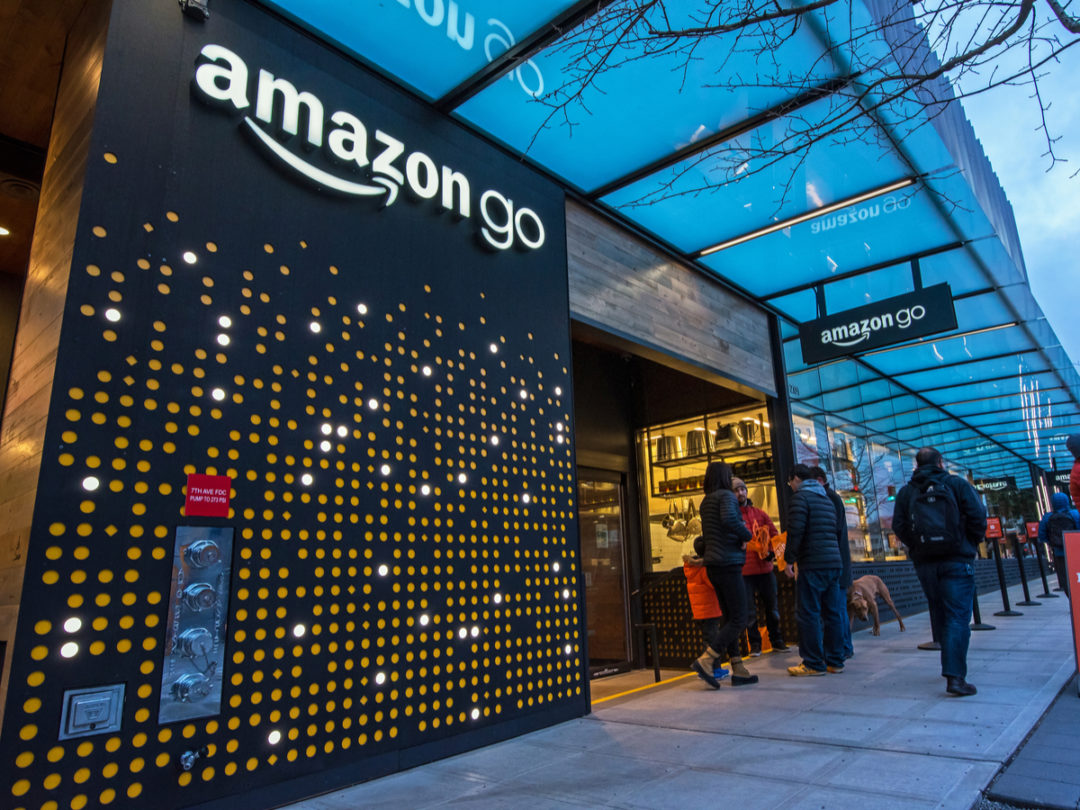
It's hard to overstate how massive a year 2020 was for e-commerce. Consumers spent more than $860 billion online with U.S. merchants, up 44% over 2019’s figures. It was the largest year-over-year growth for e-commerce in at least twenty years, and nearly triple the 15.1% growth rate from 2018 to 2019.
With e-commerce now accounting for more than 20% of total U.S. retail sales, it’s clear that online is a crucial channel across all types of industries. In no way, however, does that mean that physical storefronts are on their way out.
In the pre-pandemic era, we saw many companies that started as e-commerce-only invest in physical stores to complement their online businesses. Probably the most notable brand to do so was Amazon, the world’s largest online retailer.
Amazon’s first serious foray into in-person retail began in 2017, when the e-commerce giant purchased the high-end grocery chain Whole Foods for an eye-popping $13.7 billion. The move gave Amazon an immediate offline footprint of 460 stores in the U.S., U.K., and Canada, and sent shockwaves throughout the industry.
The following year, Amazon opened the first location of Amazon Go, a cashier-less brick-and-mortar convenience store concept, in Seattle. Since then, the company has launched an additional 26 stores across Washington, California, Illinois, and New York. Just earlier this month, the first international Amazon Go outpost opened in London.
In addition to Amazon Go, Amazon has invested in several other storefront concepts, including Amazon Books, Amazon 4-Star, Amazon Fresh, Amazon Pop Up, and Amazon Go Grocery.
Other formerly online-only brands that have gotten in on physical storefronts include Warby Parker (prescription glasses and sunglasses), Casper (mattresses), Peloton (personal fitness), Allbirds (footwear), and several men’s apparel retailers such as Bonobos, Indochino, and Untuckit
So why have all these e-commerce brands opted to develop a real-world presence? The short answer: It makes a whole lot of business sense, both from the perspective of increasing customer appeal and as a means to boost patrons’ potential spend.
Even at the height of the pandemic during last year’s holiday season, in-store walk-ins were still holding at around 40% of the previous year’s numbers. Clearly, despite ongoing pandemic concerns, customers still prioritize shopping inside of physical locations, and as COVID-19-related restrictions start to roll back, we expect that trend to continue to accelerate.
Keep in mind that four out of every five retail dollars are still spent in-store, meaning that despite the explosive growth of e-commerce, a majority of shoppers still enjoy having a tactile shopping experience. Whether it’s trying on an article of clothing, lying on a mattress to see if it’s firm enough, or interacting with an electronic device to try out its features, elements of the in-store shopping experience can’t be replicated online with the same degree of real-time tangibility. In fact, 82% of shoppers say that interacting with a product in person makes them more likely to buy.
In-person customer service is another advantage to shopping in a physical store. Good sales associates can answer questions about products, explain features, and make recommendations in a more personalized way. And of course, we can’t discount the significance of instant gratification, whereby shoppers are able to bring home their purchase the same day and ultimately get to enjoy their merchandise immediately.
Having a physical storefront also provides an additional layer of credibility for customers who might otherwise be skeptical about making purchases online from an e-commerce brand. Consumers, particularly those who might not be familiar with a brand, are more likely to feel reassured about a purchase if they can make it in person. It must also be mentioned that having a physical presence, especially in a high-traffic area, can provide a huge boost to brand awareness.
Research has consistently shown that consumers tend to spend more when shopping in person versus online. One study found that more than 70% of in-store customers spend over $50, and more than a third spend over $100. Compare that to just 54% of online shoppers who spend over $50, and a comparatively paltry 21% who spend more than $100.
That same study also concluded that impulse purchases are also substantially higher for in-person customers: 11% more men and 12% more women said they were more likely to make spontaneous additions to their shopping carts when inside of a physical store.
In reality, shopping online versus offline isn’t an either/or proposition for consumers. Considering that 73% of customers engage with multiple channels prior to purchasing or walking into a store, it would be more accurate to say that online and offline are two paths on the same converging customer journey.
Having established that fact, it’s imperative that merchants start viewing their customers in a more holistic manner. Yet many retail businesses have divided their sales, marketing, and even operations into distinct online and offline teams. The challenge with this structure is that it creates internal competition for the same customers, throwing an inefficient kink into your marketing funnel.
The retail industry has been moving toward a more omnichannel approach for quite some time. While e-commerce has seen tremendous growth over the past 10 years as brick-and-mortar businesses have adopted online storefronts, we’re seeing the reverse happen as well: a slew of online businesses launching brick-and-mortar storefronts.
As consumers begin returning to physical stores in greater numbers, and new technologies enable retailers to identify and follow their most valuable customers across the online and offline experience, we’re likely to see more retailers adopting an integrated approach to the e-commerce and brick-and-mortar parts of their businesses.
John Kelly is chief executive officer of Zenreach.







